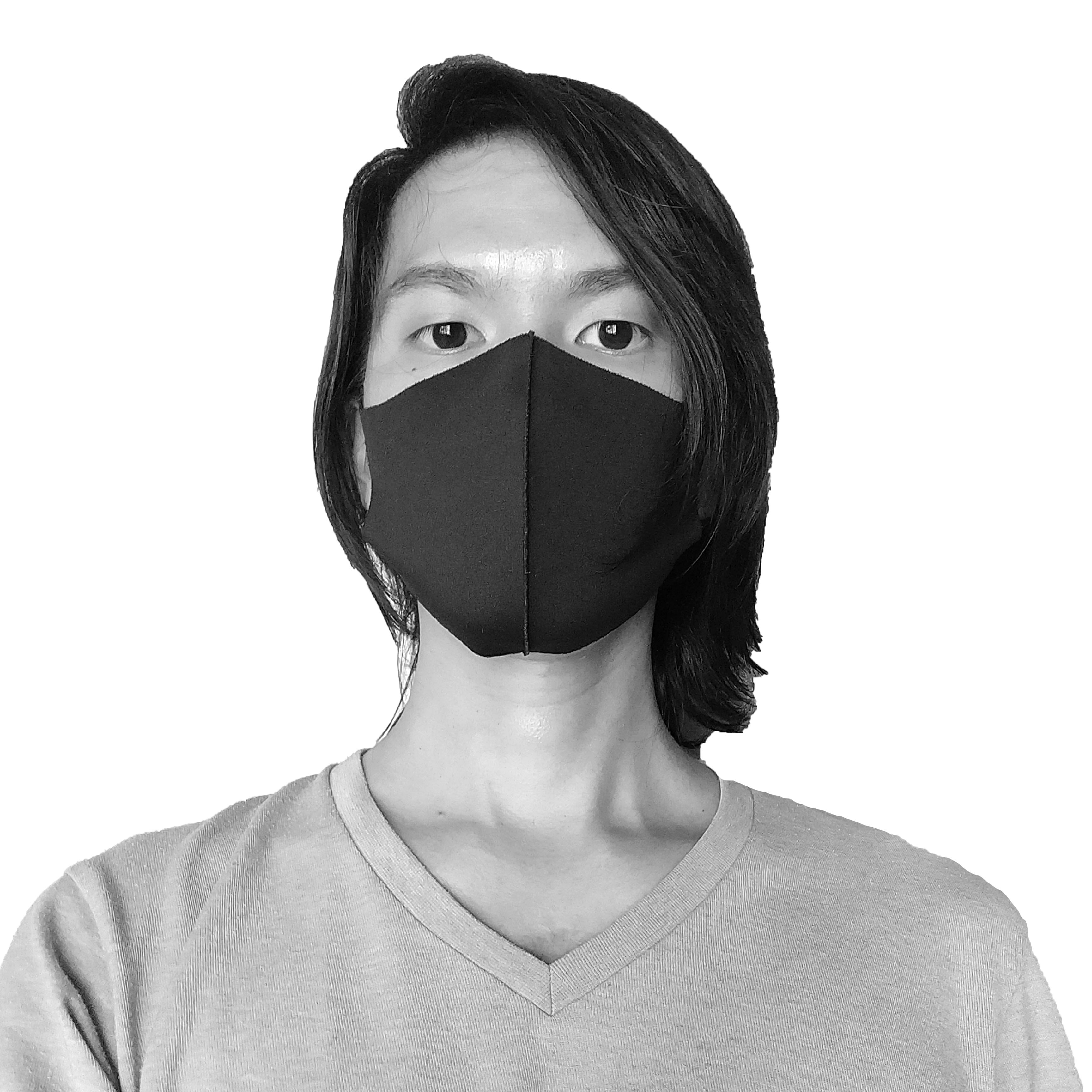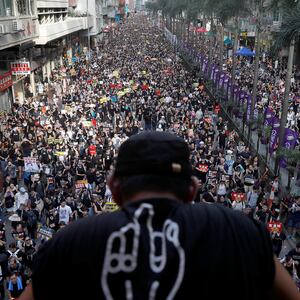HONG KONG—Arthur Shek, the co-founder of a financial newspaper here called the Hong Kong Economic Times, took the stage Saturday at an event called “Safeguard HK” to support the police. Pro-democracy protesters have been hitting the streets for seven weeks straight, even briefly seizing the legislature, and Shek compared the demonstrators to spoiled brats. Shek called on anyone who might be listening to use rattan sticks and PVC pipes to beat young people and “educate” them.
Behind the stage backdrop was a boat with a banner that read “Stop the violence, stride forward with Hong Kong.” At the time, amid elated cheers, the irony was lost on the crowd.
Then attacks actually happened.
ADVERTISEMENT
On Sunday in a neighborhood called Yuen Long, far from the scene of the day’s protests, dozens of masked men and women dressed in white shirts were waiting with sticks by the turnstiles at a train station, ready to assault any people they thought were protesters (who often wore black). They even battered unrelated passers-by, including families with children who were just trying to get home.
The massive protests in Hong Kong over the last two months, sometimes involving millions of people, initially were prompted by a plan by the city’s chief executive to introduce a law that would provide cover for politically motivated extradition to mainland China. Since then, popular demands have grown but been consistent: a complete withdrawal of the extradition bill, a retraction of the government’s label of protests as “riots,” the release of those who have been arrested, an inquiry into recent police conduct, and universal suffrage.
It is fair to say that Chinese leader Xi Jinping and the Chinese Communist Party do not have a solid plan to grapple with these developments in Hong Kong—or even a long-term strategy for integration. Few on either side of the border still have faith in the “one country, two systems” governance plan that was meant to define how Hong Kong’s political and economic systems would function after 1997, when the city’s sovereignty was returned from Britain to the CCP. Even gradual assimilation into mainland China’s governance has been met with extreme resistance in Hong Kong.
But the attacks in Yuen Long show how Beijing can tighten the screws in the city. On the surface, this appears as a domestic matter, with Hongkongers assaulting Hongkongers. It has already led to a division in the city; what you wear reflects what your ideals are or where your allegiance lies. The same goes for where you shop, because many business groups in Hong Kong maintain tight relations with governmental bodies in mainland China.
With severe control of how information flows into mainland China, Xi and the CCP don’t need to worry about the protests in Hong Kong inspiring widespread insurrection in the country. Rather, Hongkongers worry about what the eventual snapback may be. But that unease is only giving fuel to their actions and clashes with the police every few days. It’s one of the few ways in which they can still express their political views—and their rage against a political machine from which they are largely excluded.
Many videos of the incident in Yuen Long have been posted on Twitter, Facebook, and shared through other social networks and messaging apps.
Police officers were seen walking away from the scene before the lashings started. The thugs entered the station, at certain points charging onto the platform and into trains to beat up anyone who was aboard. A lawmaker, Lam Cheuk Ting, required 18 stitches in his mouth after he was attacked. One journalist with Hong Kong media outlet Stand News live-streamed the assault, and in the process was knocked down and struck by the thugs. In several cases, calls to the city’s emergency hotline were cut off mid-conversation after the attack and locations were mentioned.
Later Sunday evening, pro-Beijing legislator Junius Ho greeted the individuals who carried out the attacks, shaking their hands, applauding their actions, and thanking them. When asked about this later, Ho said “My job is to reach out.”
It didn’t take long for Hongkongers to react to Ho’s chummy exchange with the assailants. The next day, his office was egged and trashed, shattered glass blanketing every surface.
On Sunday, after the mob left the station, a small cohort of police officers arrived at the scene. They made no arrests and said that they didn’t encounter anyone holding weapons, though photographs taken by a New York Times photographer have surfaced to counter that claim.
Reporters asked why the police were slow to respond to a violent incident, but the division commander retorted “I can’t say if we are late.” He followed up with “I didn’t see the time on my watch, sorry.”
By Monday morning, more than 45 individuals had sought treatment at hospitals, although the number of people who were injured surely runs much higher. In the past few weeks, there were cases where the police force had accessed medical records of protesters who sought treatment, in turn identifying some who were present at anti-government marches.
Locals say the individuals wearing white are triad gang members. On Monday, many shops in Yuen Long remained shuttered as rumors circulated that the thugs will be back in action after nightfall.
Even before the attack in Yuen Long, there was a severe lack of trust in the police force in Hong Kong. A track by local rapper JB, “FUCKTHEPOPO,” has become an anthem among some of the younger protesters. Graffiti reading the same message has been spray-painted on the outer walls of some police stations, including the headquarters. A hand sign where all but the ring finger are extended is used to mock the police, calling back to an incident where a protester bit off the finger of a cop who was trying to subdue him during clashes in a shopping mall last week.
Many in Hong Kong now see the police as complicit in the attacks in Yuen Long. At a press conference, the police chief, Stephen Lo, said the police force wasn’t equipped to deal with what was going on at the train station because protests elsewhere demanded attention.
The city’s chief executive, Carrie Lam, who has been the focus of ire among the population in the past weeks, said the government “did not have all the available facts,” and hence had to delay action. She also mentioned that the actions of protesters in other parts of the city—in the central business district and at the Chinese Communist Party’s liaison office, where its emblem was hit with black paint bombs—“hurt the feelings of the Chinese nation,” parroting a talking point that is often used in the Chinese government’s propaganda.
Last week, the Financial Times reported that Carrie Lam had attempted to resign from her post, only to be told by Beijing that she needs to stay in place and settle matters in Hong Kong. Lam denied that any of this had ever happened. In any case, here’s the kicker: As long as she remains as the top political puppet in Hong Kong, locals will be protesting against her instead of overtly invoking Beijing and Xi Jinping in their grievances.
As we approach the fifth anniversary of the Umbrella Movement, we can expect many more protests to take place every weekend, perhaps even more often than that, with violence escalating each week.







